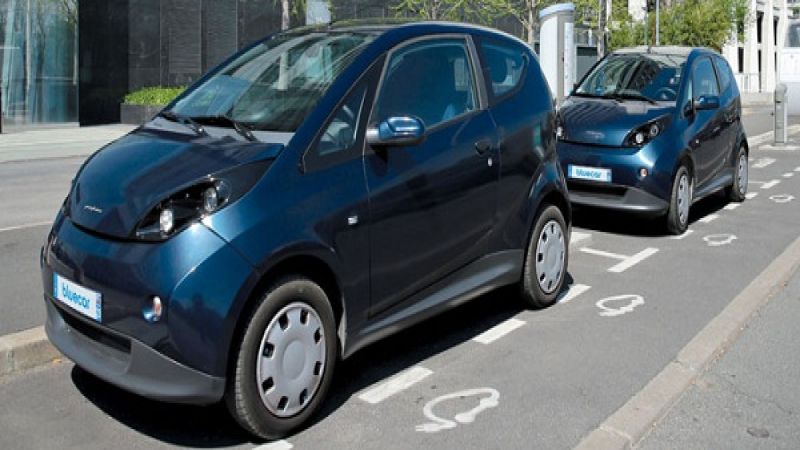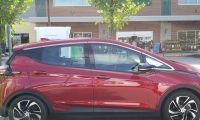The automotive industry is right to fear car-sharing – it makes car ownership far less important for those living in cities, and an AlixPartners study projects that car-sharing will take away 1.2 million vehicle sales nationwide through 2020. Just one car-sharing vehicle can displace 32 vehicles that would otherwise have been purchased in key markets. On the flip side, the phenomenon of car-sharing presents a tremendous opportunity for those poised to take advantage of a changing transportation landscape.
The French firm Bollorè established itself as a car-sharing giant with its operation in Paris known as Autolib’. Now the company is bringing its business model to the United States, starting with the city of Indianapolis due in part to Mayor Greg Ballard’s commitment to alternative energy.
Yesterday the ribbon was cut at a demonstration ceremony to officially kick off the BlueIndy program with the first car-sharing station. Intended to be the largest car-sharing program in the United States, Bollorè eventually hopes to have 200 sites throughout the city with 500 cars supported by 1,000 charging locations (via Bloomberg). The company expects to begin commercial operations within 8 months and hopes to bring 125 vehicles online within the year.
Pending federal government approval the program will use Bollorè’s own Bluecars, which are designed and produced in Italy by Pininfarina and CECOMP. The vehicles use 30 kWh lithium-polymer batteries designed by Bollorè that achieve 150 miles of range on a single charge in urban driving.
As billionaire Chairman Vincent Bollorè told Bloomberg, his company is setting out to demonstrate that “the electric car is the best solution for the future.” He bluntly acknowledged one of the biggest problems with current electric vehicles that to this point are an option “only for rich people.” Though that sentiment isn’t entirely true, the BlueIndy car-sharing program will be a far more affordable way to bring electric vehicles to the masses.
The economics of any car-sharing program are crucial. Bollorè is investing $35 million in Indianapolis, where BlueIndy will also require an estimated $15 million annually in operating costs for a fully automated system with on-call “ambassadors” for support. The program will need to enlist a certain number of users to break even; in a city of 835,000, Bollorè estimates the service will need at least 20,000 annual subscribers and will break even in its third or fourth year.
The Indianapolis Business Journal reports that according to Bollorè regular users spend about $1,000 annually to use the service, including the membership cost and hourly rental fees. For BlueIndy, an annual subscription is expected to cost $100 and the rental fee will be about $5 per half hour.
Other car-sharing programs use electric vehicles as well: considering BMW’s DriveNow service costs $12 per half hour and the popular Car2Go rental service costs $0.41 per minute ($12.30 per half hour) or a maximum of $15 per hour, BlueIndy seems very fairly priced. Zipcar, the self-proclaimed world’s largest car-sharing service, charges $8-10 per hour.
Car-sharing programs have begun establishing themselves in major American cities, showing people that there are viable alternatives to car ownership. Indianapolis isn’t known as a top EV market, but it wouldn’t be surprising to see BlueIndy begin to change people’s perceptions. The proposed scale of the service in a medium-sized city such as Indianapolis will make its vehicles very noticeable.
Bollorè is counting on capturing a large number of customers in a moderately sized market. The success of the program depends on how many people it can convince to ditch their old mobility concept and turn to car-sharing to fulfill their transportation needs. Electric vehicles are ideally suited for car-sharing and will help keep operating costs down, and getting 20,000 annual customers into the highly visible Bluecar EVs will help electric vehicles gain exposure among the wider public.
We are pulling for BlueIndy to do well, and it appears that Bollorè will give it every opportunity to succeed. The company has a proven track record in European cities, although America is certainly not Europe. It’s not yet clear if Indianapolis is a market that can generate the necessary amount of subscribers for the company to turn a profit, but the success of car-sharing in other markets and the overall rise of alternative mobility concepts is promising for the BlueIndy service.












